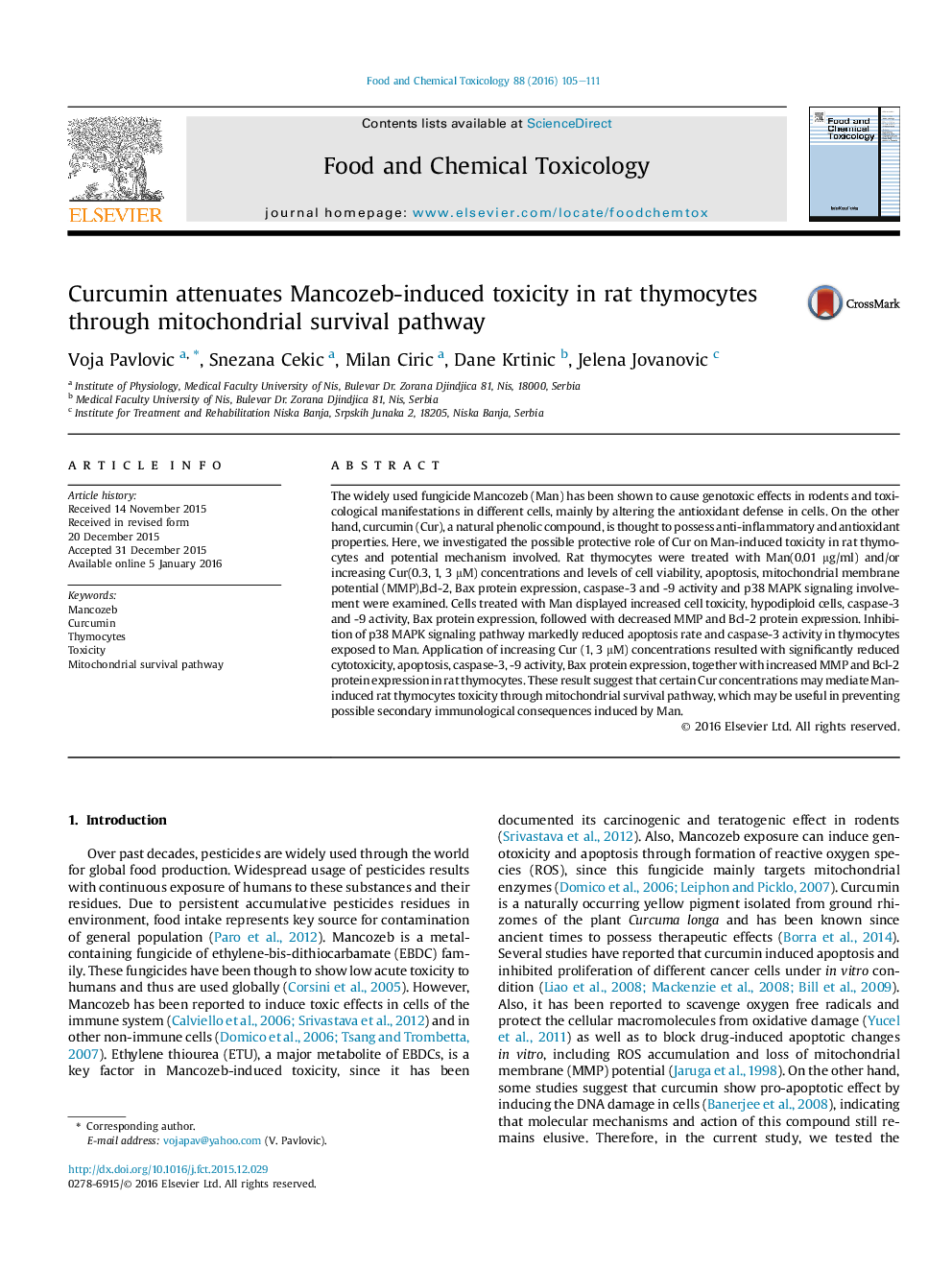| Article ID | Journal | Published Year | Pages | File Type |
|---|---|---|---|---|
| 5849442 | Food and Chemical Toxicology | 2016 | 7 Pages |
Abstract
The widely used fungicide Mancozeb (Man) has been shown to cause genotoxic effects in rodents and toxicological manifestations in different cells, mainly by altering the antioxidant defense in cells. On the other hand, curcumin (Cur), a natural phenolic compound, is thought to possess anti-inflammatory and antioxidant properties. Here, we investigated the possible protective role of Cur on Man-induced toxicity in rat thymocytes and potential mechanism involved. Rat thymocytes were treated with Man(0.01 μg/ml) and/or increasing Cur(0.3, 1, 3 μM) concentrations and levels of cell viability, apoptosis, mitochondrial membrane potential (MMP),Bcl-2, Bax protein expression, caspase-3 and -9 activity and p38 MAPK signaling involvement were examined. Cells treated with Man displayed increased cell toxicity, hypodiploid cells, caspase-3 and -9 activity, Bax protein expression, followed with decreased MMP and Bcl-2 protein expression. Inhibition of p38 MAPK signaling pathway markedly reduced apoptosis rate and caspase-3 activity in thymocytes exposed to Man. Application of increasing Cur (1, 3 μM) concentrations resulted with significantly reduced cytotoxicity, apoptosis, caspase-3, -9 activity, Bax protein expression, together with increased MMP and Bcl-2 protein expression in rat thymocytes. These result suggest that certain Cur concentrations may mediate Man-induced rat thymocytes toxicity through mitochondrial survival pathway, which may be useful in preventing possible secondary immunological consequences induced by Man.
Keywords
Related Topics
Life Sciences
Agricultural and Biological Sciences
Food Science
Authors
Voja Pavlovic, Snezana Cekic, Milan Ciric, Dane Krtinic, Jelena Jovanovic,
